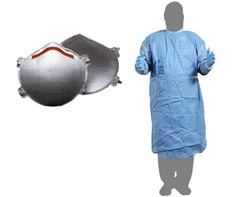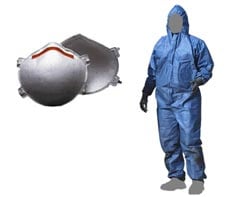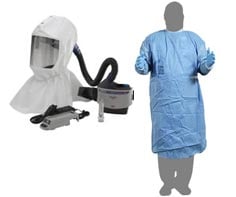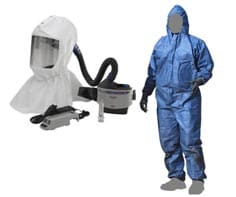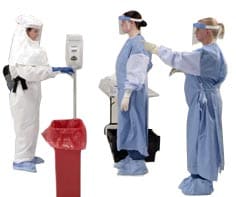Guidance for Donning and Doffing Personal Protective Equipment (PPE) During Management of Patients with Selected Viral Hemorrhagic Fevers in U.S. Hospitals
This guidance refers only to the following viral hemorrhagic fevers: Ebola, Marburg, Lassa, Crimean Congo Hemorrhagic Fever (CCHF) and the South American Hemorrhagic Fevers (i.e., those caused by Junin, Machupo, Chapare, Guanarito and Sabia viruses). Refer to the pathogen-specific pages for further information about the individual pathogens (e.g., signs and symptoms, incubation periods, routes of transmission, diagnosis, treatments).
Guidance for Donning and Doffing Personal Protective Equipment (PPE) During Management of Patients with Selected Viral Hemorrhagic Fevers in U.S. Hospitals
Select Your PPE Combination
The following informational materials demonstrate the procedures described in CDC guidance for donning and doffing (i.e., putting on and removing) personal protective equipment (PPE) for all healthcare providers entering the room of a patient confirmed to have a selected viral hemorrhagic fever or a patient suspected to have a selected viral hemorrhagic fever who is clinically unstable or has bleeding, vomiting, or diarrhea. While the videos specifically mention Ebola, the content in the video also applies to the care of patients with: Marburg, Lassa, Crimean Congo Hemorrhagic Fever and the South American Hemorrhagic Fevers (i.e., those caused by Junin, Machupo, Chapare, Guanarito and Sabia viruses).
These informational materials are intended to promote patient safety and increase the safety of the healthcare provider.
Prior to working with patients with VHF, all healthcare providers involved in the care of the patients must receive training and demonstrate competency in performing all VHF-related infection control practices and procedures, specifically in donning and doffing proper PPE.
Please Note: These informational materials are made available for educational and informational purposes only and are intended to supplement the Centers for Disease Control and Prevention’s Guidance on Personal Protective Equipment (PPE) in U.S. Healthcare Settings during Management of Patients Confirmed to have Selected Viral Hemorrhagic Fevers or Patients Suspected to have Selected Viral Hemorrhagic Fevers who are Clinically Unstable or Have Bleeding, Vomiting, or Diarrhea, current as of August 2023 2023. These informational materials are not intended to constitute or be substituted for direct training, medical or treatment advice. The Johns Hopkins University and The Johns Hopkins Health System Corporation and their affiliates and subsidiaries disclaim responsibility and liability for any, and all claims of harm arising from or in connection with these informational materials and related activities.
These training tools are being released urgently to provide practical tools for healthcare providers preparing to manage or managing patients with VHFs in U.S. healthcare facilities. These videos will be updated and refined on an ongoing basis based on user feedback and best practices in managing patients with VHFs in U.S. hospitals.
Disclaimer: The names of any commercial products that appear in this video are for information purposes only, and the use of these names does not represent an endorsement of those products by the Centers for Disease Control and Prevention, the Johns Hopkins University, the Johns Hopkins Health System Corporation, or their affiliats.
Acknowledgment: These informational materials were created in collaboration between the Centers for Disease Control and Prevention, Johns Hopkins University, Salesforce Foundation, Miami University, Association for Professionals in Infection Control and Epidemiology, and the Society for Healthcare Epidemiology of America.
N95 and NIOSH Approved are certification marks of the U.S. Department of Health and Human Services (HHS) registered in the United States and several international jurisdictions.
